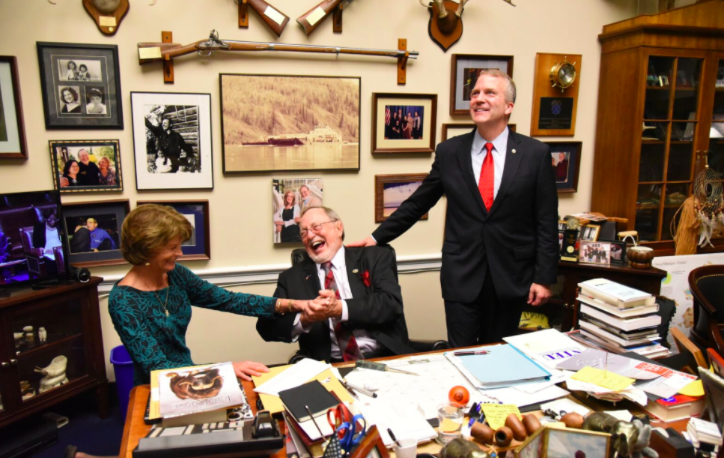FROM STARS AND STRIPES
KABUL, Afghanistan — The Pentagon has identified the U.S. soldier killed in a helicopter accident in eastern Afghanistan on Friday as Chief Warrant Officer Jacob M. Sims, a Blackhawk helicopter pilot.
Sims, 36, of Juneau, Alaska, was assigned to 4th Battalion, 160th Special Operations Aviation Regiment, from Joint Base Lewis-McChord in Washington.
The helicopter was transporting troops for a night raid in Logar province when it hit a tree, forcing an emergency landing, Salim Saleh, the provincial governor’s spokesman, told Stars and Stripes.
The U.S. military said six other U.S. crew members were injured in the incident and sent for medial treatment. Saleh said one Afghan servicemember was also wounded.
The joint raid with Afghan forces was part of a broader operation to clear the Taliban from parts of Logar, Saleh said.
The militants, who are believed to control about half of the province, said they shot down the helicopter in the volatile Kharwar district, killing dozens of Americans — a claim NATO refuted.
“We can confirm the crash was not the result of enemy action,” NATO’s Resolute Support mission said in a statement. “We have full accountability for all personnel and the crash site has been secured.”
Juneau Mayor Ken Koelsch offered his condolences: “We were shocked and saddened by the news of the loss of Jacob M. Sims in Afghanistan. The heartfelt sympathies of Juneau go out to the Sims family and friends.”
The death brings the total number of U.S. servicemembers killed in Afghanistan this year to 12. More than 2,400 have been killed since the war began 16 years ago.
NATO said an investigation into the incident had been launched.
“We are deeply saddened by the loss of our comrade,” Gen. John Nicholson, the top U.S. commander in Afghanistan said. “On behalf of all of Resolute Support, our heartfelt sympathies go out to the families and friends of our fallen comrade and those injured in this unfortunate event.”
Governor Bill Walker today ordered that United States and Alaska flags be immediately lowered to half-staff in honor of Sims.
“Chief Warrant Officer Sims and his family made the ultimate sacrifice for the rest of us,” Governor Walker said. “Byron, Toni, Donna and I are holding his parents, his wife and his children in our daily prayers. While our state and our country lost a dedicated soldier, they lost their son, husband and father. Our military servicemembers put themselves on the line in defense of the values we hold dear. We owe them a debt of gratitude.”
Flags should return to full staff at sunset on Thursday, November 2.
THE LIFE OF A SOLDIER
Chief Warrant Officer Two Jacob Michael Sims was born in the state of Oklahoma on Aug. 13, 1981.
He enlisted in the Army on Aug. 12, 1999. Upon completing basic training and advanced individual training, CW2 Sims was assigned to Fort Bragg, N.C. as a Combat Engineer.
After successful selection and completion of Warrant Officer Flight Training, CW2 Sims was assigned to Fort Wainwright, Alaska as a UH-60 Blackhawk helicopter pilot.
CW2 Sims volunteered to serve in the 160th Special Operations Aviation Regiment (Airborne) and graduated Officer Green Platoon in April of 2014. CW2 Sims was assigned to Alpha Company 4th Battalion, 160th Special Operations Aviation Regiment (Airborne), on Joint Base Lewis-McChord, Washington. CW2 Sims served as a Fully Mission Qualified MH-47G Pilot-in-Command and Company Aviation Safety Officer.
CW2 Sims was a veteran of Operation JOINT GUARDIAN in Kosovo, numerous tours in support of Operation IRAQI FREEDOM in Iraq, and Operations ENDURING FREEDOM, FREEDOM’S SENTINEL, and RESOLUTE SUPPORT MISSION in Afghanistan.
His military education includes the Basic Training Course, Advanced Individual Training Course, Basic Airborne Course, Basic Leader’s Course, Air Assault Course, Jump Master Course, Advanced Leader’s Course, Warrant Officer Flight Training, UH-60 Qualification Course, Survival, Evasion, Resistance, and Escape (High Risk) Course, CH-47D Qualification Course, Officer Green Platoon, Combatives Level 1 Training Course, MH-47G Qualification Course, Aviation Safety Officer Course, and the Aviation Warrant Officer Advanced Course.
CW2 Jacob Sims’ awards and decorations include the Air Medal (with Combat Device), Joint Service Commendation Medal, Army Commendation Medal (with 3 Oak Leaf Clusters), Army Achievement Medal (with 5 Oak Leaf Clusters), Joint Meritorious Unit Award (with 2 Oak Leaf Clusters), Meritorious Unit Citation (with 2 Oak Leaf Clusters) Army Good Conduct Medal (4th Award), National Defense Service Medal, Kosovo Campaign Medal, Afghanistan Campaign Medal (with 1 Bronze CampaignStar), Iraqi Campaign Medal (with 2 Bronze CampaignStars), Global War on Terrorism Service Medal, Noncommissioned Officer Professional Development Ribbon (2nd Award), Army Service Ribbon, Overseas Service Ribbon, NATO Medal (3rd Award), Air Assault Badge, Senior Parachutist Badge, Sapper Tab, Basic Aviator Badge, and the Combat Action Badge.
“On behalf of the 160th Special Operations Aviation Regiment I would like to extend my most sincere condolences to the family of CW2 Jacob Sims. Jacob lived by a creed that few understand and even fewer embody. He will not be forgotten and his legacy will endure through his family, friends, and fellow Nightstalkers. You have our unwavering support, and always have a welcome place among the Night Stalker family,” SAID Colonel Philip Ryan, Commander, 160th SOAR (A).

